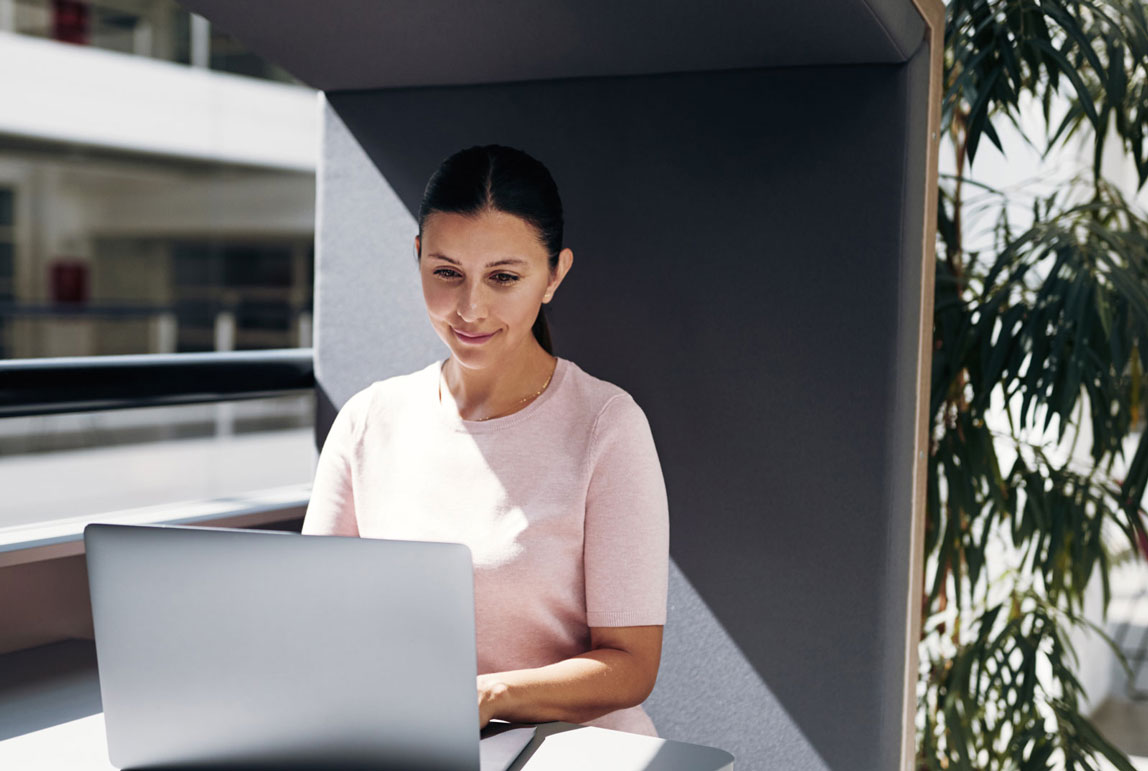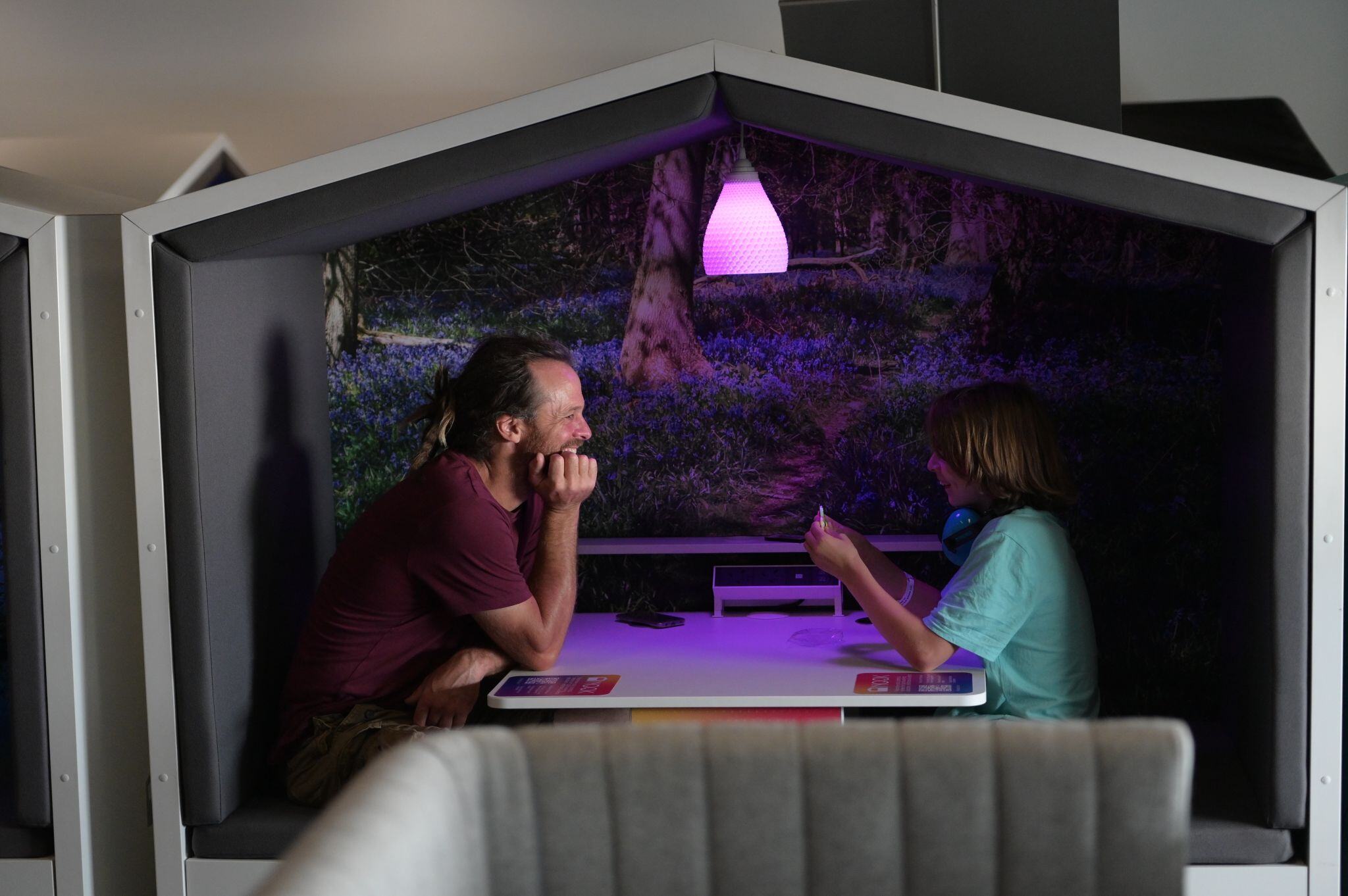The ‘new normal’ workspace must nurture and champion the neurodivergent.
Talk of emerging from the pandemic into a ‘new normal’ is everywhere. But what should this new normal look like? Well, if businesses are determined to make a change and to do things differently then it is absolutely essential that practical consideration is given to supporting and nurturing neurodivergent employees.
The workplace doesn’t work
Whilst great strides have been taken in recent years to understand neurodiverse behaviours, many facets of everyday life still fall behind. The workplace is one such example. Some progress has been made in terms of adapting space for physical disabilities, but it is less apparent where neurodiversity is concerned. And we understand why – it’s not always easy and obvious to know what to do.

Nook Huddle pod in BP atrium London
Different types of brains (e.g. introvert vs extrovert, neurodiverse, autistic), different types of tasks (e.g. programming vs brainstorming), and different times of day (mid-morning vs immediately after lunch vs just before home time) form a three-dimensional matrix of conditions, and therefore needs, from a workspace. That might sound complex, but in practical terms, this does not mean a total re-design.
Three simple changes that can benefit neurodivergent individuals
There are three top considerations when creating a workspace suited to neurodivergent individuals, and relatively simple solutions exist for each:
- Noise levels
Noise is the number one issue because it permeates and impacts concentration, anxiety-levels and general wellbeing. Creating an environment that enables individuals to escape from noise is key. This might be done with acoustic wall panels, ceiling panels and room dividers which can not only be used to make sound reverb less in a space, but also to sub-divide areas with differing functions and noise levels.

Nook pod family with huddle pod, open shelter and solo booth
Interestingly, an environment that is too quiet can also be an issue for many, preventing them from speaking up, making calls or expressing themselves fully. White noise can be used to create a base comfortable noise level into which people feel more open to be themselves.
- Lighting
Light is proven to have a powerful influence on mood, energy levels and the ability to process information.
Light can be used zonally, creating pockets of space that are comfortable to individuals. Different colours create different moods and can help provide sensory support for autism, dyslexia and visual impairment.

Nook Huddle pod in open office at influencer marketing company
- Personal space
It is important to enable employees to regulate their own personal space without making them feel like they are in the spotlight for doing so. Creating withdrawal spaces is key – discrete areas that provide separation without totally isolating users from the workspace. Placing these close to work desks enables people to hop casually into the space for respite or for a more intimate conversation.

- Lighting
Light is proven to have a powerful influence on mood, energy levels and the ability to process information.
Light should be controllable zonally, creating pockets of space that are comfortable to individuals. Different colours enhance different moods and can help provide sensory support for autism, dyslexia and visual impairment.


Changes that ensure everyone wins
In considering the needs of the neurodivergent, businesses demonstrate responsibility towards individuals. And by thinking about individuals, companies start to perform better as a whole.

Many of the workspace changes suggested for neurodivergent individuals focus on wellbeing, on delivering havens of calm and the opportunity to take a break from the hubbub without isolating completely from colleagues. These priorities are now also high on the wish-list of every employee – priorities formulated as they experience new ways of working.

Nook Huddle pods in Barnsley Digital Media Centre
If there is to be a ‘new normal’ in a post-Covid 19 world, now is the time to ensure that neurodiversity is a central part of that planning.
Tick-Box
- Consider – is my workspace working for all?
- Think about noise levels and acoustics. Too quiet can be as disruptive as too noisy
- Develop spaces in which employees can withdraw without being isolated
- Think about zonal lighting, create pockets of calming colour
- Dedicate space to mindfulness and total relaxation
- Make employees part of the design conversation
We would love to help you be more inclusive.



.png)
.png)
